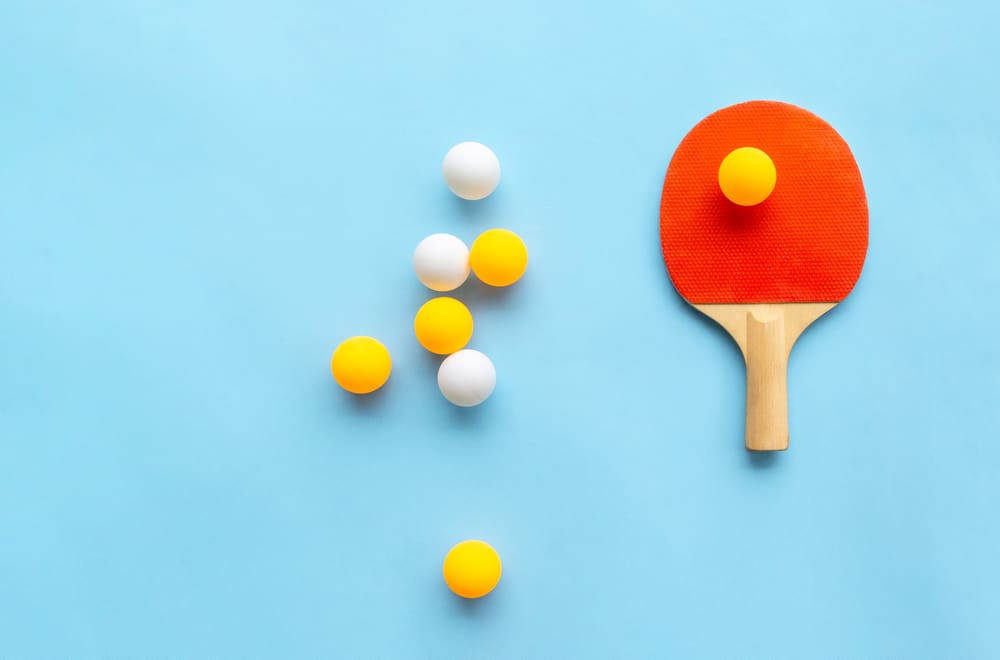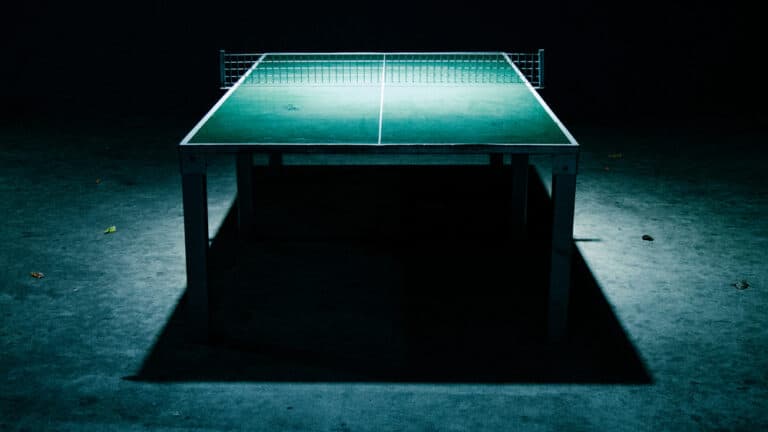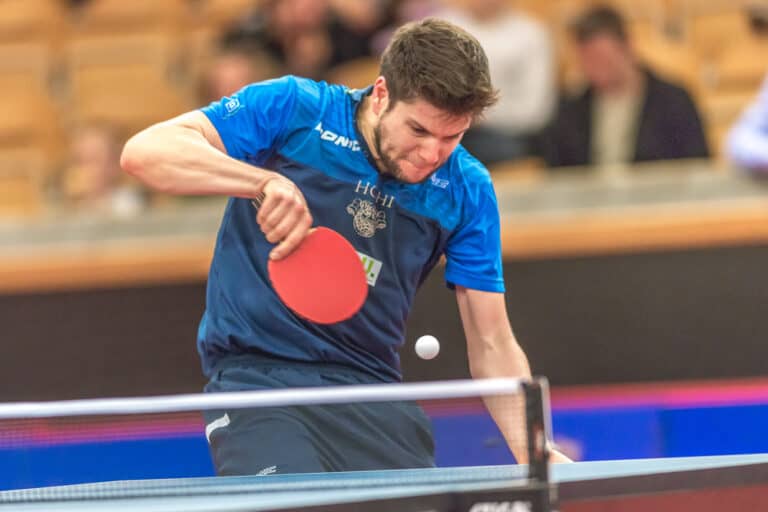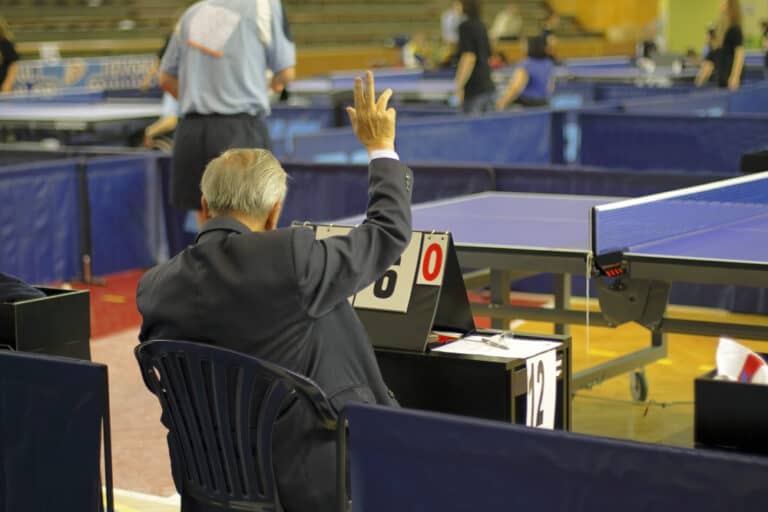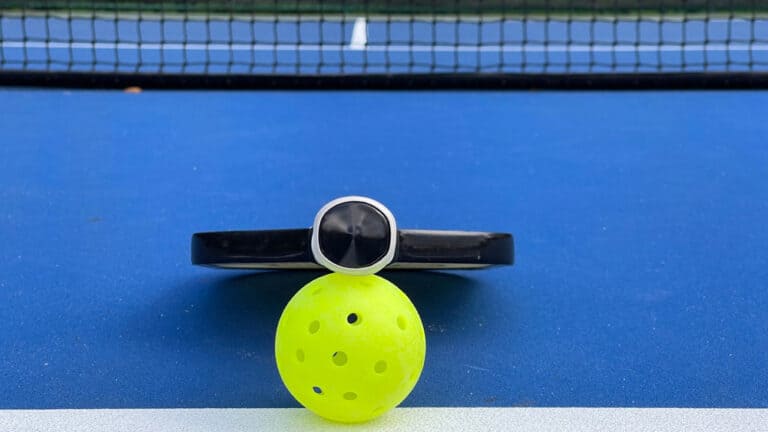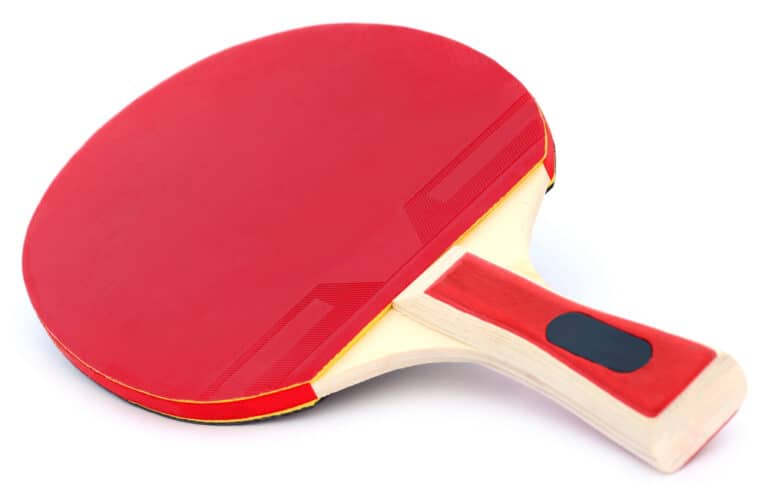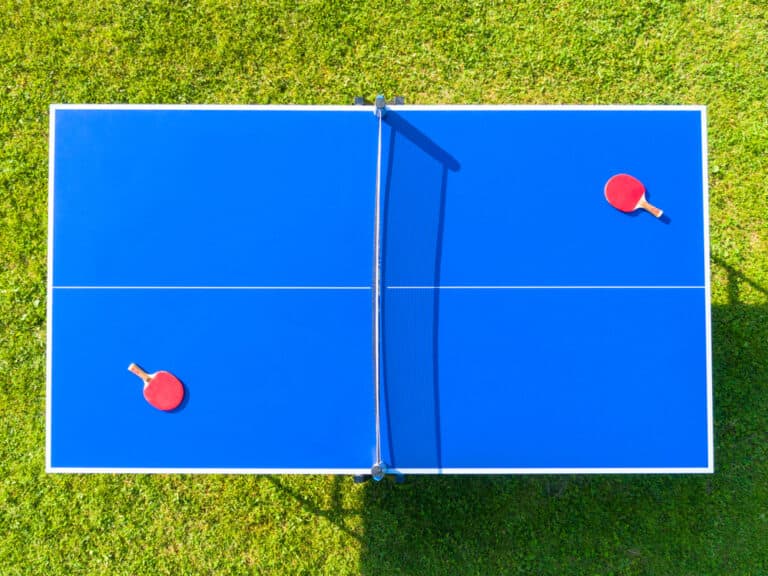What Is The Difference Between 1 Star And 3 Star Ping Pong Balls?
If you’re interested in playing ping pong, then you’ll notice most balls have a star rating. But what does this mean? Some may be curious why selecting high-quality ping pong balls is such a big deal. Which brand should you purchase, and what price should you expect to pay? And what is the difference between the likes of a 1-star and 3-star ping pong ball?
The quality of a ping pong ball increases with its star rating. Those with three stars are the most reliable and enjoyable balls to play with. One-star balls are far less expensive than three-star balls but are softer and hence more likely to break. Two-star balls are categorized as mid-range.
So now we have a rough idea of what the star system indicates, and it is a smart ranking system in ping pong, which allows us to quickly determine which balls are of more excellent quality. We will compare 1-star ping pong balls to 3-star ping pong balls because that is how ping pong balls are rated. We shall also delve into some history and our top picks of balls per star, so be sure to read on.
Unlocking The Differences Between Ping Pong Ball Stars
It could seem that all ping pong balls are the same because they all have the same appearance and feel. This might be partially true, but each type of ball has significant differences. Due to the various production processes each quality ball has undergone, these variations frequently affect the ball’s pricing.
A higher star rating indicates the best ping pong balls. There are one, two, and three-star ratings. The balls with one star are of the lowest grade. These balls are fragile and have a hard time standing the test of time.
The 2-star ball comes in second place in the rankings; these balls are far more durable and tougher than the 1-star balls. The less durable 1-star and 2-star balls are typically purchased in large quantities in packs of 100 or 200 and intended for use in rallies or practice.
The 3-star ball is the winner at this point. This ball is approved by the ITTF and is the best to use for a competitive game of ping pong. We shall discuss the 2-star balls but speak about the 1 and 3-star rated balls in more detail.
The only balls you should use in tournament games and competitions are those with three stars because they are the best balls. To compete with others, certain businesses may promote their balls as four or five-star balls. So remember that if two balls are ranked in the brand’s highest tier, a 3-star ball is equivalent to a different brand’s 5-star ball.
Any ping pong player must be aware of the ball’s quality. Depending on the quality, table tennis manufacturers produce a variety of star balls. Every star ball differs from the others for a variety of reasons.
Numerous star balls are produced by manufacturers, including Stiga, DHS, Joola, Donic, etc., although they typically range from one to three stars. The list of official ping pong balls is available on the ITTF website, and 4 or 5-star balls do not even feature on the ITTF website; see the list of approved Table Tennis Balls.
A Quick Comparison Between 1 And 3-Star Ping Pong Balls
Many things make a difference when it comes to the stars on ping pong balls, and although we can try to pinpoint the variations to a distinct difference, there are plenty of things to consider. Thus we have created a brief breakdown of what you will find to differ between the two types of starred balls.
The Cost Difference
3-star balls are expensive, while 1-star balls are less expensive. The price of a 3-star ball is often close to 4-5 times that of a 1-star ball. That represents a sizable pricing disparity.
The Balls’ Durability
Although 3-star balls are more durable than 1-star balls, 1-star balls are less durable due to cost.
The Hardness Of The Balls
A ping pong ball will bounce better and be more durable the harder it is. Compared to 2 and 3-star balls, 1-star balls are softer; as a result, they will misshape quite easily and not rebound equally. 3-star balls are harder than 1-star balls because they are thicker and made of better materials.
The Difference in Ball Weight
Ping pong balls with three stars are heavier than those with two stars and one star. They are less prone to break since they are constructed from more robust, denser materials. They also bounce higher because of it.
Best Manner Of Usage
The 1-star balls are primarily used for amusement and enjoyment. The 3-star balls are typically utilized by pros and in competitions. While professionals tend to use 3-star balls during their practice and multi-balls to acclimate to the bounce and feel of such balls, decent-level players typically utilize 1-star balls for multi-ball.
The Materials Used To Make The Balls
It’s fascinating that a ball’s quality might vary based on the brand. Typically, the material for 1 and 3 stars is the same. However, some producers of 3-star balls employ a heavier grade of plastic.
The Type Of Gameplay To Expect
A slower game will be played using a ball with one star. Fewer rallies would occur due to a lower bounce, but more rallies with plenty of spin would occur when using 3-star balls. Since ping pong is a sport that requires quick reflexes, 3-star balls have a more consistent bounce and predictability. Consequently, 3-star balls are favored at the professional level.
The 1 Star Ping Pong Ball
The 1-star ball will be what we examine first. These balls are of the lowest grade and are ideal for leisure play or recreational clubs. These balls are made of various materials, including celluloid and polystyrene. They are, however, unquestionably the three classes’ softest balls and these balls break more frequently and quickly wear out because of their softness.
The ball’s softness reduces its bounce ability, making it less advantageous for more skilled players. These balls are perfect for friendly and recreational play, as was previously noted. You can still train and get better at your game even though they are softer and less resilient.
The 2 Star Ping Pong Balls
The 2-star ball is listed next in the rankings. These balls are unquestionably a better option for players who have refined their playing style and are seeking to advance their game. These balls are far more durable than the 1-star balls since they are notably stiffer. Although not utilized in competitive play, these balls are good enough to play a close match with your opponent.
The 3 Star Ping Pong Balls
The highest quality ball available is this one. You ought to get these balls if you want to play at a competitive level. The materials used to make 3-star balls vary. The material chosen for competition is plastic since it offers the most reliable and constant bounce.
Due to their ease of production, materials like celluloid are slightly less expensive. Plastic is frequently preferred because celluloid doesn’t provide the ball with the most consistent bounce.
The 3-star ball can survive direct blows, typically lasting long. Additionally, these balls are ideal for techniques like spin play and deft control. As was already noted, these balls have ITTF approval and are utilized in competitive play.
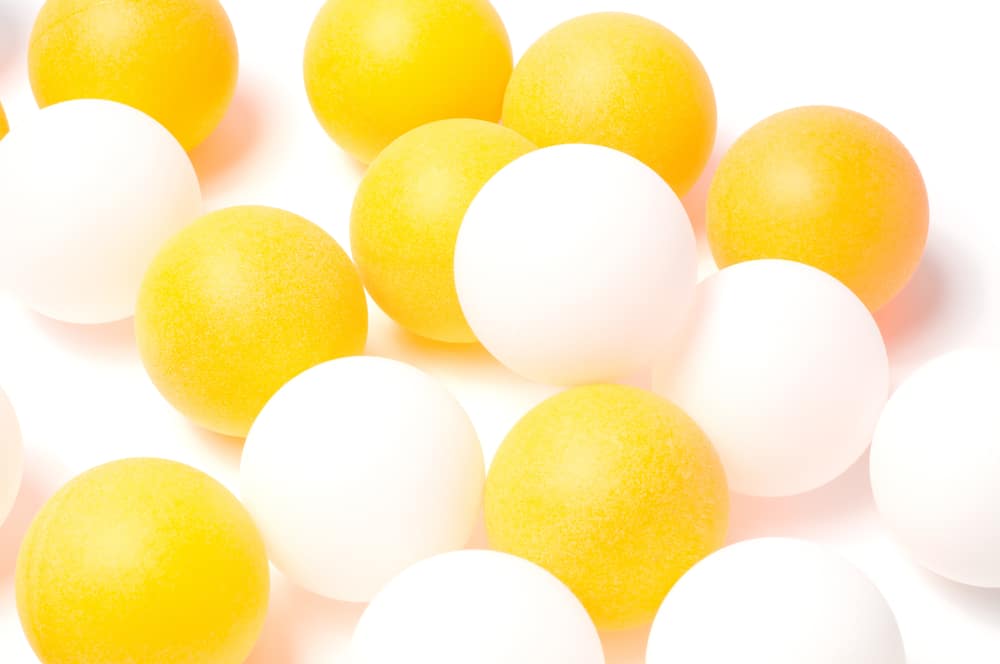
How Ping Pong Balls Have Changed Over Time
Ping pong, often known as table tennis, was created in Victorian England in the late 1800s. The original ping pong balls were composed of cork and rubber, but some players innovated and even used golf balls or string balls.
While exploring the United States in 1901, Englishman James Gibb came across lightweight celluloid balls that he felt would be ideal for ping pong. When the International Table Tennis Federation (ITTF) was established in 1926, the diameter and material of competition table tennis balls were standardized as being made from celluloid and had a diameter of 38mm.
The game became increasingly faster to play as racket technology advanced over time. The ITTF changed the balls’ size from 38mm to 40mm in preparation for the Sydney Olympic Games in 2000. These balls are identifiable thanks to their 40mm labeling. The goal was to slow down play and make the ball easier to see by television cameras to increase audience enjoyment.
Typically, the balls come in yellow and white, and the color has no bearing on the ball’s quality. These days, white-colored balls are typically utilized in competitions according to player desire.
Regarding quality, celluloid balls were once the norm for table tennis games (as previously mentioned), but nowadays, plastic balls are utilized. You can tell a plastic ball is plastic since it has 40+ inscribed on it. After switching from celluloid to plastic balls, the game underwent a significant transformation and is now much more physically demanding than it was previously.
Looking At Some Of The Top 1 Star Ping Pong Balls
In two categories—1-star balls and 3-star balls—we’ve chosen to review three of the most excellent ping pong balls. We aren’t looking at 2-star balls because we want to emphasize competitive and recreational play. While 3-star balls are utilized in competitive games, 1-star balls should only be used for leisurely play.
1. Champion Sports 1 Star
Champion’s 1 star balls are excellent for practice and provide everyone with top-notch entertainment. They come in packs of 6, so there is always a simple replacement for the dreaded missing ball, which is a good feature.
These balls are moderately durable, seamless, and match the official specifications for table tennis balls, which call for balls to be 40mm in diameter. The balls are, therefore, perfect for practice play.
The quality of 1-star balls is frequently subpar; however, these are among the best in their class because this isn’t the case with
them. Because of the balls’ vivid, dazzling white hue, keeping track of them during frantic play is simple. These balls are also excellent for casual play and may be used for productive practice.
2. STIGA 1 Star
You may buy balls from STIGA with confidence because of their stellar reputation in the ping pong world. The fact that there are 144 balls is one of the main reasons we adore this product. As a result, practice sessions may start quickly and easily, and players can drill their shots faster.
These balls should only be used for practice or a casual game with a friend because they only have one star, so the grade may not be as good as you’d want. They are perfect for repetitive practice, though, which is another incentive to use them. The ball is 40mm in diameter, which is the standard size for tournament play.
3. Franklin Sports 1 Star
Franklin’s 1-star balls are perfect for everyone, have outstanding qualities like bounce, and are rumored to be a little bit more resilient than other 1-star balls. They are excellent for players wishing to improve their skills and those just starting in ping pong.
These balls are also 40mm in diameter and 2.7 grams in weight, which satisfies the required specifications. By playing with these balls, you can get ready for games with ITTF-approved balls.
These balls’ seamless construction ensures they are made to last for a reasonable amount of time, allowing the game to continue without interruption due to cracks or dents. Players can finally concentrate on the game and do not have to bother about constantly bringing new balls into play because of their longevity. This is an excellent choice if you want reasonably priced balls for practice.
Looking At Some Of The Top 3 Star Ping Pong Balls
Now, the 3-star balls are intended for tournament and competition purposes; that is not to say that you cannot use them for practice purposes, but they are more expensive and do not always lend themselves to general practice or recreational play. The ones we have below are some of the top balls on the market, and you will also find them listed on the ITTF website, except for Nittaku.
1. Butterfly 3 Star
The Butterfly 40mm 3-star ball was the official ball of the 2009–2010 World Table Tennis Championships. Since then, the company has stopped making its orange balls, and these balls are no longer on the market.
The medium-hard balls are consistently well-rounded. They are a 40mm ball with excellent flight and exceptional spin response. They can survive very long because they are strong and have a rating of 6.2. Their speed is rated at 8.8/10, and their consistency is rated at 9.0/10.
The 40mm balls from Butterfly have an overall rating of 8.7 and are considered one of the most well-liked brands among players. Its higher prices would be a drawback, though.
2. Nittaku 3 Star
Nittaku 3 Star Premium balls have a marginally more significant overall rating of 9.1/10 and are the same size at 40mm. Compared to Butterfly’s balls, theirs are a bit tougher, and it’s uncommon to discover one that isn’t round.
Their speed rating is 8.9, somewhat faster than Butterfly’s, and their balls have a high referential integrity rating of 9.0, allowing them to last for an extended period. The Japanese-made Nittaku balls are equivalent to Butterfly’s but are more expensive, making them unaffordable for regular play even if they would be ideal for tournament play.
3. Double Fish
Double Fish balls are incredibly robust and won’t break even after months of use. Compared to Nittaku and Butterfly, Double Fish 40mm 3-star balls are equivalent, but they are significantly less expensive, making them ideal for training.
There are many different kinds of balls available, so deciding which is best for you should be based on your intended usage.
Additionally, you should search for the highest rating balls that are also ITTF certified if you intend to utilize balls for professional games in a competition. This accreditation indicates that the ball has received international approval for competition usage.
Conclusion
If you are trying to have fun, stick to 1-star balls and have a good time. It will be affordable and enjoyable. But if you’re a pro, you know precisely which star ping pong ball to use. Many things make a difference when it comes to comparing 1 and 3-star ping pong balls, price is one, but there are also material, weight, hardness, durability, and other factors to keep in mind.
References
- https://pingpong-guide.com/stars-ping-pong-balls-meaning/
- https://gameandentertain.com/ping-pong-ball-star-ratings-one-vs-two-vs-three-star-balls/
- https://projectsports.nl/en/whats-the-difference-between-1-star-and-3-star-ping-pong-balls/
- https://www.myactivesg.com/sports/table-tennis/how-to-play/table-tennis-equipment/choosing-a-good-table-tennis-ball
- https://topspintalk.com/3-star-ping-pong-balls-vs-1-star/
- https://pingpongruler.com/best-table-tennis-balls/
- https://ttcrunch.com/articles/difference-between-one-star-three-star-table-tennis-balls/

